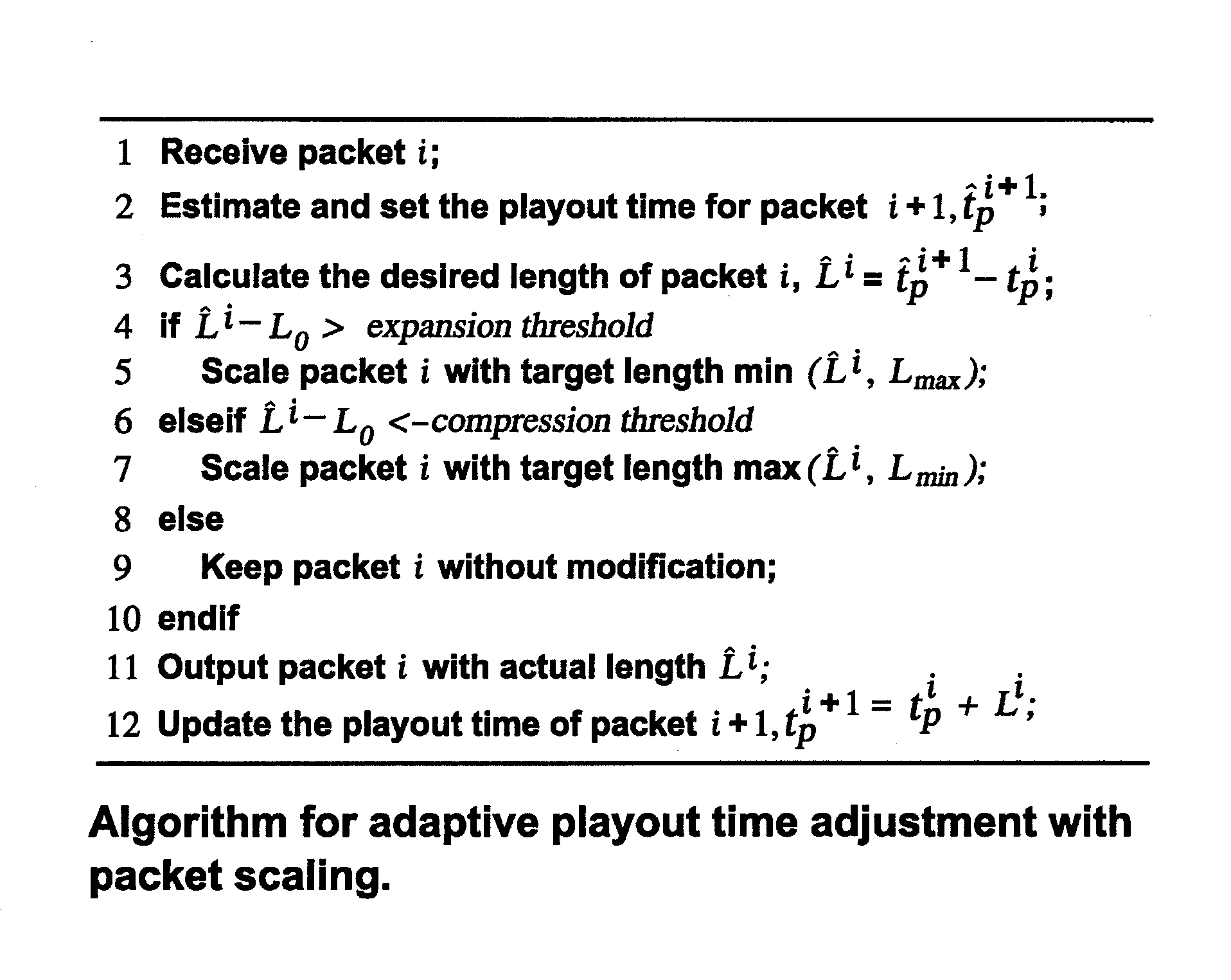Adaptive playout scheduling for multimedia communication
a multimedia communication and playout scheduling technology, applied in the field of real-time communication over the internet, can solve the problems of inability to apply active error control techniques such as retransmission, arbitrary delay or even loss of packets,
- Summary
- Abstract
- Description
- Claims
- Application Information
AI Technical Summary
Problems solved by technology
Method used
Image
Examples
Embodiment Construction
[0021]With reference to FIGS. 1A, 1B and 1C, there are shown three different playout scheduling schemes generally designated 100, 110 and 120. The graphs 100, 110 and 120 show the delay of voice packets on the network as dots and the total delay as solid lines. When a later playout time is scheduled, the total delay increases as shown in FIG. 1A. Packets arriving after the playout deadline, i.e., dots above the line, are lost and have to be concealed. The task of a playout scheduling scheme is to lower the solid line (reduce the total delay) as much as possible while minimizing the number of dots above the line (minimize late loss).
[0022]The simplest method, shown in FIG. 1A, uses a fixed playout deadline for all the voice packets in a session. It is not very effective in keeping either the delay or the loss rate low enough in practice, because the statistics of the network delay change over time and a fixed playout time does not reflect this variation.
[0023]With improved playout al...
PUM
 Login to View More
Login to View More Abstract
Description
Claims
Application Information
 Login to View More
Login to View More - R&D
- Intellectual Property
- Life Sciences
- Materials
- Tech Scout
- Unparalleled Data Quality
- Higher Quality Content
- 60% Fewer Hallucinations
Browse by: Latest US Patents, China's latest patents, Technical Efficacy Thesaurus, Application Domain, Technology Topic, Popular Technical Reports.
© 2025 PatSnap. All rights reserved.Legal|Privacy policy|Modern Slavery Act Transparency Statement|Sitemap|About US| Contact US: help@patsnap.com



